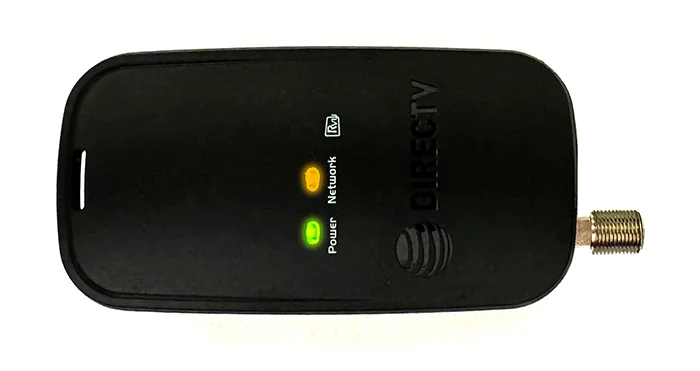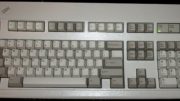Of all the equipment produced by DIRECTV over the years, the DECA is one of most misunderstood. That’s a shame, because it’s also a very flexible and useful piece of equipment. I go into detail on what a DECA does here, but here’s the short version:
- It effectively converts between wired Ethernet and DIRECTV’s MoCA network.
- It checks and monitors the quality of communication.
- It pairs with other devices on the MoCA network for smooth transfer of data.
Basically, it’s the way that network information gets from your coaxial cable to anything that uses Ethernet. People use them to add Ethernet ports in places where there aren’t any, and DIRECTV’s Gemini uses one because it doesn’t have a built-in coaxial connector.
For the most part a DECA will “just work.” There are three lights on your average DECA, and generally they are all green. One shows that you have power, one shows that you are able to connect to some sort of network, and one shows that there is a link between the DECA and another coax networking device like a Genie DVR.
But what if all the lights aren’t green?
Sometimes you’ll see a DECA with something like the image you see above. Sometimes the center light will be blinking, and sometimes it will be solid. Sometimes the third light will be green, and in other cases it won’t be on at all. Let’s take a look at the options that you may have.
Option 1: No lights at all
This means that the DECA isn’t getting power. With a modern DECA you can choose to power them with an EPS10 power adapter or you can use the MicroUSB port. However, if you do choose to power the DECA through MicroUSB, you must have a connection that supplies at least 500mA. Generally any phone charger will do this, but most DIRECTV equipment won’t. (The Gemini is the exception, it will power a DECA.)
Option 2: Flashing amber network light
You will see the network light flash amber for a few seconds after you power the DECA up. This is normal. However, if the light keeps flashing for more than a few seconds, this indicates that there’s no network connection. Check the coaxial cable as well as the Ethernet cable. If there’s wear on either, replace them. You can use any Ethernet cable at all with a DECA, it doesn’t have to be the one that came with it.
Option 3: Solid amber network light and green RVU light
This option means that you are seeing reduced network performance. It may be nothing. If everything is working as it should, then there’s no reason to worry about it. However, if you’re seeing slow performance from the client, picture quality issues, or something else that makes your experience less desirable, change out cables until you fix things.
Option 4: Solid amber network light but no green RVU light
This will generally mean that the DECA is lonely, in a manner of speaking. It’s an indication that there’s some communication on the line, but it can’t pair with any other DECA or device on the coax line. Most often this is due to a broken cable, loose cable, or something like that. In a rare case it can mean that the “other” piece of equipment is faulty or that the cable going into it isn’t secure.
What to do from here
As I said, if everything in your DIRECTV system works fine, there’s no need to do anything just because you see an amber light on a DECA. However, if everything is not fine, here are some suggestions that may help.
- Make sure that all coaxial connections are properly terminated. Remove and inspect all terminators for damage — don’t just assume that because you see a terminator, that it’s working.
- Remove any non-supported hardware like diplexers, non-DIRECTV equipment that’s connected via DECA, that sort of thing.
- Reboot all DIRECTV devices. This rarely fixes this sort of problem, but it’s been known to happen.
- Simplify your installation by removing long cable runs and unnecessary splitters. If the total amount of cable between one device and another (including both cables that lead to the splitter) is over 200 feet, you may see problems.
When it comes to DECAs, they are so versatile and “just work” so often that people use them for a lot of things. We tend to forget that there really are just a few supported uses for them, and getting back to a completely supported installation might help you fix issues. From there you can slowly introduce changes to your install and see which one causes the problem.
Want to know more?
Call the DIRECTV experts at Solid Signal for system upgrades, activations, and technical support. We’re here for you during East Coast business hours at 888-233-7563. If it’s after hours, fill out the form below. We’ll get right back to you!




